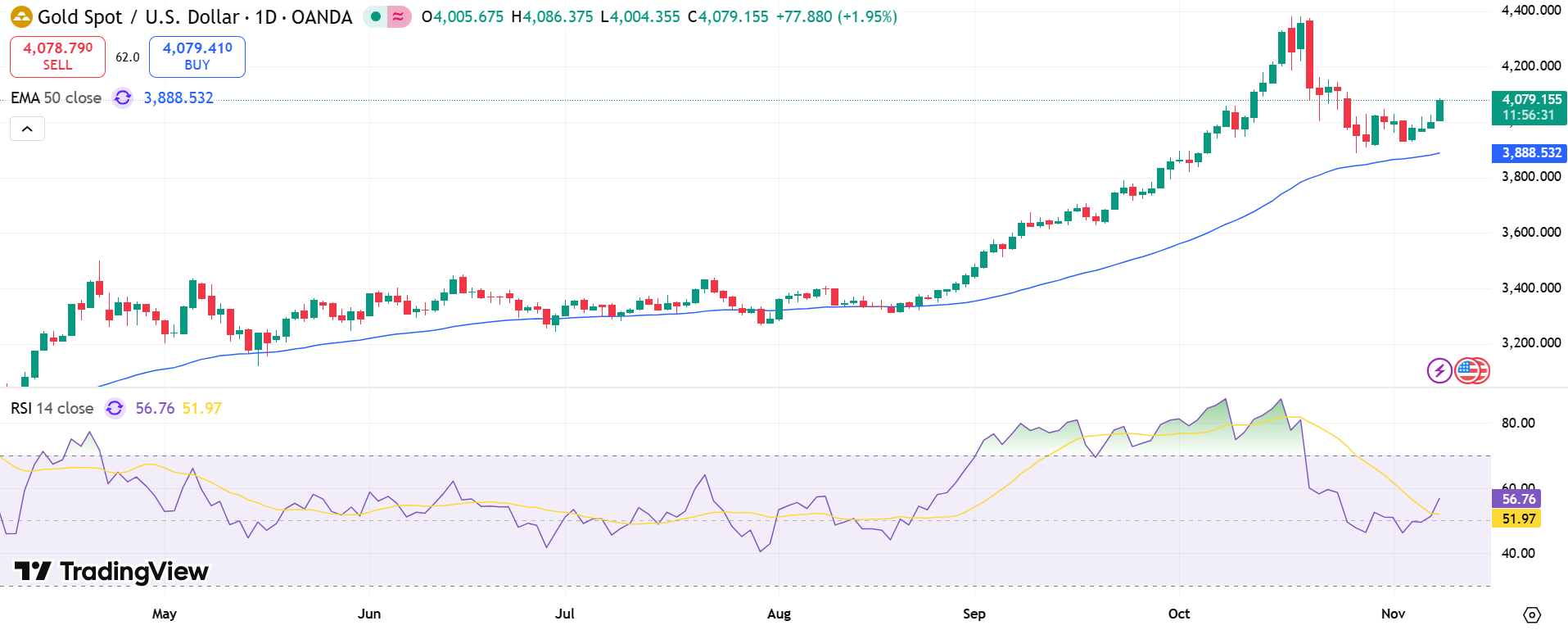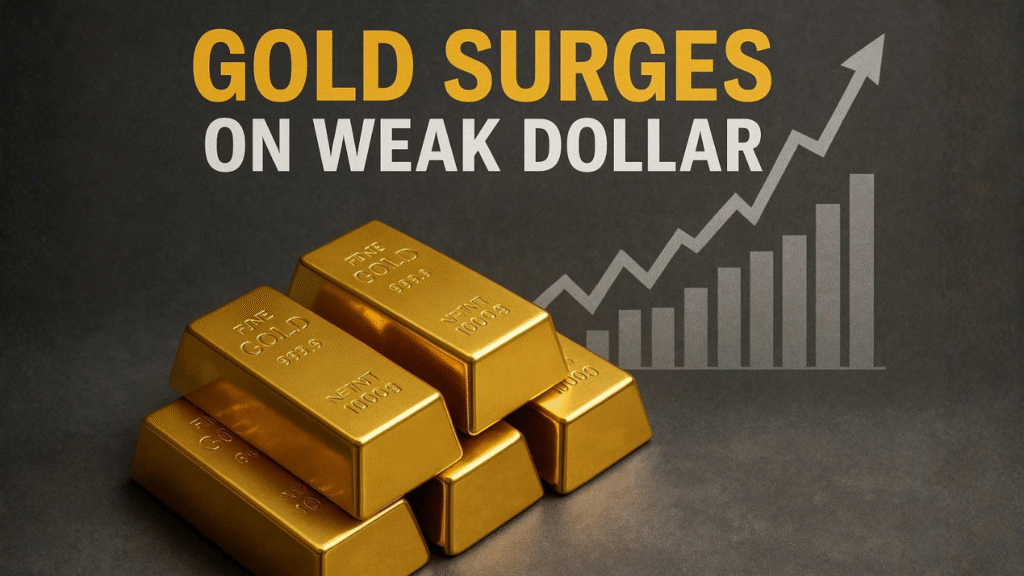Gold prices soared past the key $4,000 per ounce threshold in early Asian trading on Monday, as a weaker U.S. dollar and optimism over a potential end to the government shutdown boosted investor sentiment. The rally underscores renewed confidence in safe-haven assets at a time when the U.S. economy faces political and monetary uncertainty.
Spot gold climbed 1.4% to $4,053.72 per ounce, while December gold futures advanced 1.3% to $4,062.45, reflecting broad market support for the precious metal. The move followed last week’s modest decline in the dollar, which made gold more attractive for holders of other currencies.
Investor focus remains on Congress, where progress toward resolving the longest government shutdown in U.S. history is underway. Analysts suggest that a resolution could stabilize federal spending and restore confidence in the broader economy.
Markets Eye Fed Rate Cuts in December
The latest surge in gold prices was also driven by growing speculation that the Federal Reserve may cut interest rates by 25 basis points in December. Traders have priced in a 61.9% probability of a rate cut, according to the CME FedWatch tool.
Weak labor market indicators have intensified expectations of monetary easing. Data from Challenger, Gray & Christmas revealed that October saw the sharpest round of U.S. layoffs in nearly two decades, raising concerns about a slowdown in job creation.
A potential rate cut would typically pressure the dollar and boost non-yielding assets such as gold, silver, and platinum.
Other key metal movements:
- Silver gained 1.8%, reaching $49.22 per ounce.
- Platinum rose 1.4%, trading near $1,571.92 per ounce.
- The U.S. Dollar Index slipped slightly, extending last week’s decline.
Shutdown Progress Supports Market Stability

Investors cheered as the U.S. Senate voted 60-40 to move forward with a bipartisan spending bill aimed at ending the shutdown. The decision broke a prolonged Democratic filibuster that had stalled negotiations for weeks.
Once passed, the bill is expected to reopen federal agencies and allow the release of delayed economic data, giving markets a clearer picture of growth and inflation trends.
Economists suggest that ending the shutdown could help steady market volatility and support a more predictable policy outlook ahead of 2026. For now, gold remains a clear beneficiary of uncertainty — its strength reflecting both investor caution and renewed faith in tangible assets.


